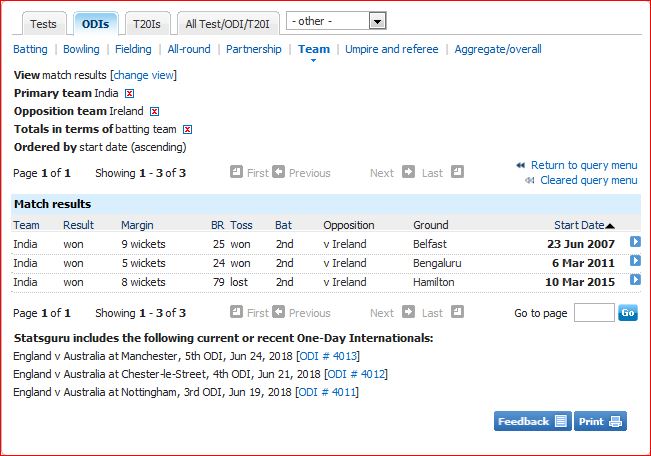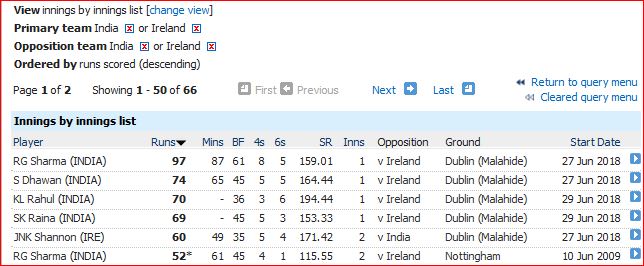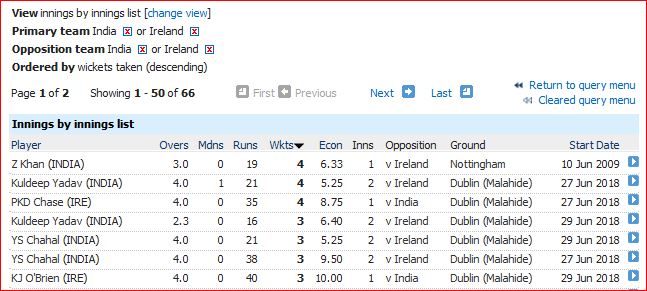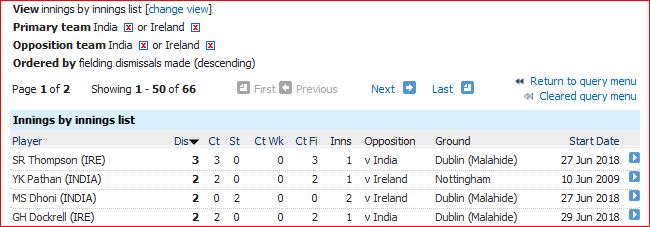Here is the short, short history of T20Is between India and Ireland:

The match in England in 2009 was during the T20 World Chapionship.
And here is the equally short history of ODIs between these teams:

The 2011 and 2015 matches were in the course of the World Cups.
Apart from these matches, India played South Africa in a bilateral series called the Future Cup in 2007, winning 2-1:
http://www.espncricinfo.com/ci/engine/series/index.html?season=2007;view=season
A quick look at T20I records between these teams:
Highest innings:

Best innings bowling:

Best innings fielding:

Allround performance: 20 runs and 2 wickets in a match:
No instances.
India has visited Ireland a number of times in the past, as the usual practice has been to tag on short visits to Ireland whenever there is a major tour of England. Most of these matches have been one or two day matches which have neither List A nor first-class status.
India’s maiden tour of England in 1932 seems to have included matches against almost all the counties as well as other teams, but did not include a visit to Ireland.
However, India did play one first-class match against Ireland in 1936. The scorecard is worth recalling as it captures the essence of that tour:
http://static.espncricinfo.com/db/ARCHIVE/1930S/1936/IND_IN_ENG/IND_IRELAND_09-11JUL1936.html
Points to note:
Vizzy captained in this match and made his customary single digit score.
Lala Amarnath did not play.
India won by 10 wickets, thanks mainly to CK Nayudu (7wi and 10wm) and Merchant (71*).




























